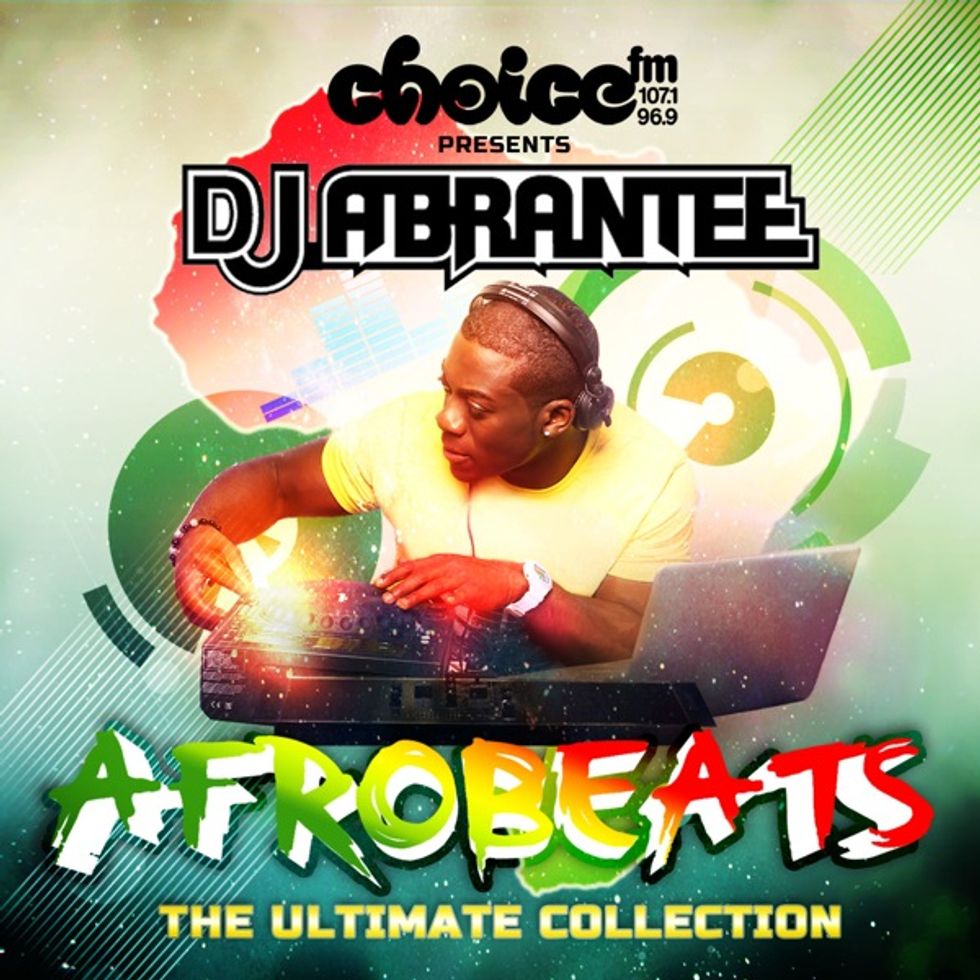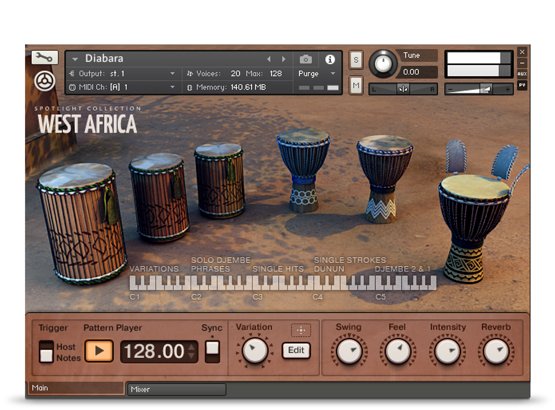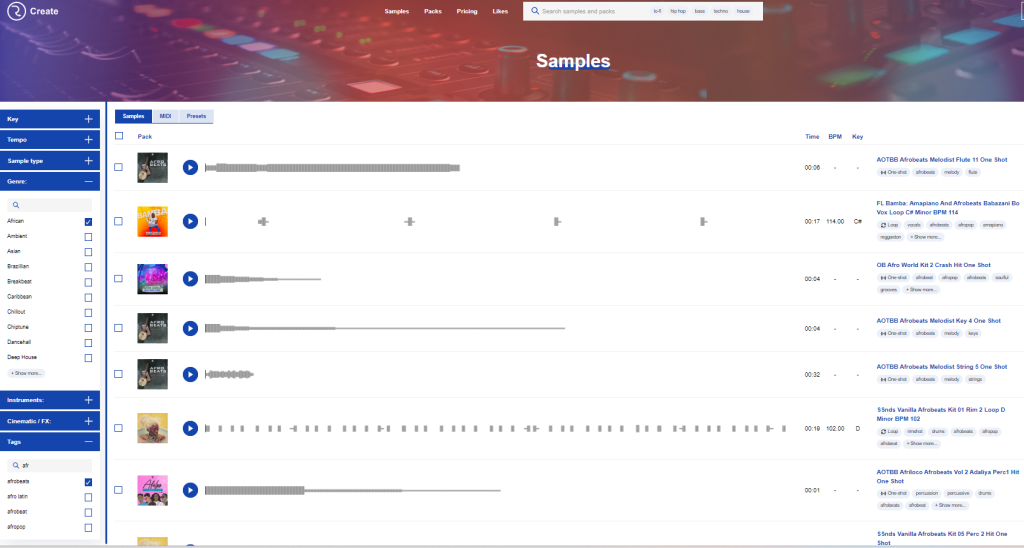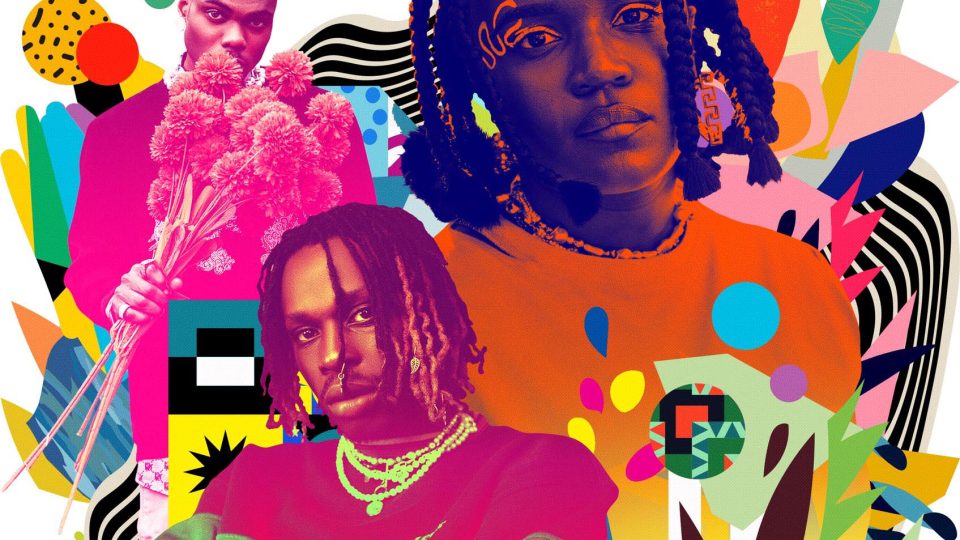How to Make an Afrobeats track.
Discover the vibrant world of Afrobeats, one of the most dynamic musical genres of recent years. With its skyrocketing popularity, Afrobeats has firmly established itself on the global music scene.

The term ‘Afrobeats’ originated in the UK and is credited to London DJ, DJ Abrantee. It served as a simplification, coined to streamline African popular music for international media consumption. The label ‘Afrobeats Track’ conveniently encapsulated a 21st-century blend of Western rap, RnB and dancehall influences with contemporary Ghanaian and Nigerian pop music, offering an accessible classification for this dynamic fusion. It’s essential to note that Afrobeats is distinct from Afrobeat, the funk-driven genre pioneered by Nigeria’s iconic Fela Kuti. For a wider examination of African music and Afrobeats place in this diverse musical landscape check out this blog.
In this guide, we’ll be examining the essence of Afrobeats, unravelling its key elements, and providing insights into creating your very own Afrobeats tracks.
Defining Features of an Afrobeats Track
As with all music creation, the first step is to understand and appreciate the nature of the genre you will be working in. At the heart of an Afrobeats track lies its pulsating rhythm, which serves as the genre’s defining force. Afrobeats blends traditional African rhythms with elements of hip-hop, dancehall, reggaeton and other contemporary genres. This fusion creates a vibrant and infectious rhythm that drives the music forward. Characterized by intricate percussion patterns and syncopated rhythms, Afrobeats drums command attention with one sole purpose: to inspire movement and get you dancing!
Melodically Afrobeats melodies often feature repetitive phrasing, where a short melodic motif or riff is repeated throughout the song. This repetition helps to create a hypnotic and immersive listening experience, allowing the melody to sink in and become ingrained in the listener’s mind. Afrobeats melodies often explore modal interplay, drawing from traditional African scales and modes to create a unique harmonic and melodic palette. These modal inflexions can give Afrobeats melodies a distinctively African flavour, contributing to the genre’s cultural authenticity.
Key ingredients
Rhythm
At the heart of this genre lie a variety of musical ingredients that come together to create its distinctive sound.
Rhythmically, an Afrobeats track combines traditional percussion instruments with programmed drum machine-style kits. The main drum pattern is often led by rim shots or pitched-up snares while the kick drums tend to be punchy and warm.
Percussion tends to take the form of traditional African instruments such as the djembe which is a West African drum with a goblet shape and goatskin head. The Talking Drum can also be heard in many Afrobeats rhythms. Originating from West Africa, the talking drum is played by squeezing the strings attached to its sides, altering the tension of the drumhead and producing different pitches.

As well as drum percussion the high frequencies are often catered for using shakers. The shekere is a type of gourd shaker covered in a net of beads or seeds. It produces a bright, shuffling sound when shaken or struck, adding texture and colour to Afrobeats rhythms.
Melody
In an Afrobeats track, melody plays a pivotal role, often blending modern synth sounds with guitar elements. The guitars utilized can range from acoustic to electric, with the latter often featuring a raw, untreated quality reminiscent of traditional Nigerian Highlife music.
In terms of synth sounds, Afrobeats embraces diversity, with a wide array of tones and textures being utilized. However, there are certain trends observed, with many tracks incorporating rich pads that complement the underlying chord progressions. Additionally, electric piano voicings such as Rhodes piano often form the foundation of the main chord structures in an Afrobeats track. These provide an uplifting and soulful backdrop. Synth bell or mallet-type sounds are frequently employed for top-line melodies, adding a shimmering quality to the overall sonics.
When it comes to basslines, Afrobeats tends to favour a melodic approach. Whether synth-based or performed on live electric bass, the basslines in Afrobeats music contribute significantly to its melodic richness. There are clearly parallels and similarities between the melodic elements of Afrobeats and Reggaeton music. This possibly stems from their shared roots in the traditions of Reggae dancehall.
Vocals
Afrobeats vocals are characterized by their dynamic and expressive delivery, often reflecting the celebratory and energetic nature of the music. Singers in Afrobeats music typically showcase a wide vocal range, effortlessly moving between smooth crooning and lively chants.
Lyrics in Afrobeats tracks are delivered through a diverse range of performance styles, spanning from melodic singing to rhythmic rapping or chatting in a dancehall tradition. This fusion often sees traditional African accents seamlessly intertwining with Jamaican patois, creating a unique hybrid style. Harmonies are often rich and layered, adding depth and texture to the music. Like much urban music autotune is widely used and often in an unsubtle way where the robotic artifacts are a feature.
Lyrically, Afrobeats songs cover a range of themes including love, partying, social issues, and everyday life experiences, with an emphasis on positivity and empowerment. Call-and-response patterns are common, fostering audience engagement and participation. Overall, Afrobeats vocals contribute to the genre’s infectious energy and serve as a powerful vehicle for storytelling and connection.

Time to Get Creative!
Generally speaking, Afrobeats songs sit between 90 and 110 bpm, so set your DAW or device’s tempo within these margins. To kick things off have a search through your virtual instruments for some interesting percussion. Have fun laying down a percussion pattern making sure you apply some form of high-frequency shaker type perc.
Depending on the way you work the next step is to either program in some drums or get to work on a melodic chord progression.
Melodic Elements
If you are a music/melody first type of producer then pull up a nice piano sound to write your main progression. Don’t spend too much time deliberating on the instrument choice as you can audition other sounds once you have laid the keys down. You are aiming for something sweet and joyful sounding rather than dark or brooding. Therefore it’s best to avoid using minor scales in favour of a major scale.
Alternatively, if you play the guitar or know somebody who does you might want to use this instrument as your song starter. The main thing to remember is to keep things simple. Afrobeats tend not to be too noodly or complex. 2 bar progressions are great maybe with a slight change up on the last bar. Once you’re happy with a chord progression it’s time for some embellishments.
Rich Synth pads are fantastic at filling out your production, giving it depth and character at the same time. Try experimenting with various pad sounds that complement your chord progression. Make sure the tone of the pad also contrasts and sits well with the main chordal instrument. Finally, try dialling up some short percussive melodic instruments and experiment with different melody lines. Again keep the melody nice and simple but feel free to experiment with interesting effects such as delays, phasers etc.
Drum Programming
When it comes to drum programming the snare drum, which is often represented by a rimshot, usually provides the main rhythmic accents. These accents often possess a skipping quality, adding a distinct groove to the rhythm. The Kick drum can either be programmed to compliment the snare/rim or it’s often just placed on every 8th note. It can sometimes be a great compositional trick to use a combination of both straight kicks and non-linear kicks.
If you’re stuck for inspiration it’s always a good idea to listen to a selection of popular afrobeats tracks. You can use these drum patterns as inspiration without directly copying them.

As for your drum sounds, most afrobeats drums feature clean dry hits that are generally very short in nature. The snare, rim or claps tend to be tuned up in pitch helping them to cut through clearly in the mix. Once you are happy with your drum pattern don’t be afraid to go back and re-jig your percussive sounds. In fact, as with most DAW-based music production, it’s often a fluid process where you are constantly tweaking elements and sequences.
Sample inspiration
If you prefer composing using samples, the world of Afrobeats offers a plethora of authentic sample packs to explore. Whether you seek a captivating melodic progression to kick-start your track or a vibrant drum loop to set the rhythm, sample packs present limitless possibilities. Utilize search terms such as “Afrobeats,” “Afropop,” “African,” and even “Reggaeton” to discover suitable sample material.
Again I would suggest first looking for some nice percussion loops when building an Afrobeats track. Stick a perc loop in your DAW and it will provide a time signature to work from that has way more vibes than a jarring metronome. And Afrobeats music is all about those vibes!
Once you’ve set the groove with a percussive loop in your DAW, delve into the diverse array of available samples. For beginners in music production, construction kits can prove invaluable, offering fully composed pieces broken down into individual musical elements. With these kits, you have the freedom to layer, rearrange, and even chop up samples to suit your creative vision.
Remember, your Afrobeats track doesn’t have to rely exclusively on samples. Feel free to blend sampled elements with your own programmed instruments and sounds, adding depth and authenticity to your composition. Samples serve as fantastic tools for embellishing your original creations. For example, a vocal adlib, Horn riff or FX riser can inject some extra sparkle into your track.

Ready to embark on an Afrobeats inspired sample mission then why not check out RouteNote Create where we have a fantastic selection. I have even plucked out some of our favourite Afrobeats packs to get you started.
Summary
I hope this guide has inspired you to embrace some vibrant African flavour and cook up your own Afrobeats offerings. With its uplifting, positive vibes you are sure to have a lot of fun in the process.
And if you would like some further inspiration I’m going to leave you with this excellent video tutorial by Jay Cactus. Watch as Jay builds a fantastic Afrobeats track in no time using FL Studio.
Remember – RouteNote Create subscriptions start from as little as $2.99. You also get 10 FREE credits to spend on samples along with access to our FREE sample pack bundle when you sign-up
